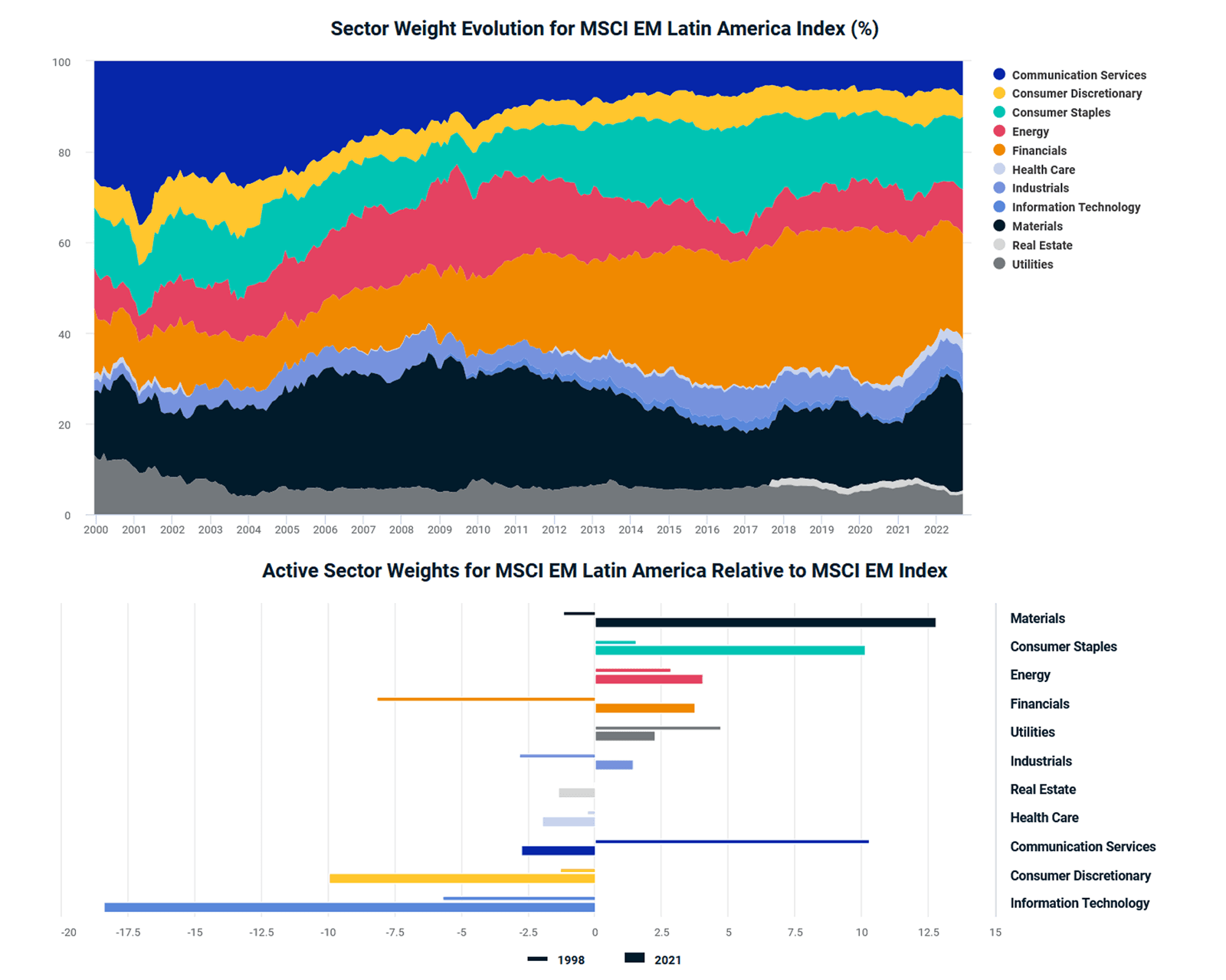A Closer Look at Sectors in Latin America
The drivers of Latin America's economies have significantly changed over the past two decades, as we can see clearly by looking at the sector composition of the Latin American stock market. Materials, financials and consumer staples, the three top-performing sectors in the region since December 1998, have grown in prominence over the last 20 years, largely at the expense of the communication-services sector.
Compared to the other regions within the emerging markets (EM), Latin America's economies had greater representation in materials, consumer staples and industrials, and less in the information technology (IT), consumer discretionary and real estate sectors. In the overall MSCI EM Index, the largest sectors were IT (driven by EM Asian companies), financials (driven by EM EMEA companies) and consumer discretionary (driven by EM Asian companies), exhibiting a procyclical profile.
Relative to other EM regions, the sector profile of EM Latin America is distinctive, which may present opportunities for diversification.
EM Latin America Sector Weights

Source: MSCI
Subscribe todayto have insights delivered to your inbox.
Global Investing Trends
You’ll find insights provided in research papers, blogs and a Chart of the Week that succinctly puts topical issues in context.
Latin America: A Market with Unique Characteristics
Latin American stock markets have recovered strongly as the world starts to overcome some of the COVID-19 pandemic’s challenges — renewing interest in the region.
A Closer Look at Latin America’s Performance
Latin American markets have been historically more resilient during periods of financial distress such as the 2008 global financial crisis.
The content of this page is for informational purposes only and is intended for institutional professionals with the analytical resources and tools necessary to interpret any performance information. Nothing herein is intended to recommend any product, tool or service. For all references to laws, rules or regulations, please note that the information is provided “as is” and does not constitute legal advice or any binding interpretation. Any approach to comply with regulatory or policy initiatives should be discussed with your own legal counsel and/or the relevant competent authority, as needed.

